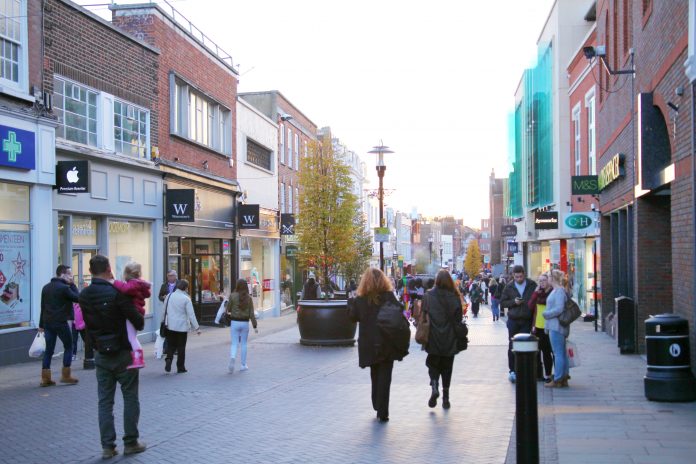Richard Morris, director at technologywithin, explores whether flexible workspaces could be the solution for ailing retailers
Almost £8 billion has been spent by councils on commercial real estate (CRE) since 2016, with much of it being retail space. Yet bricks and mortar retail has been on a steady downtrend, something only made worse by the pandemic. A solution for ailing retailers and CRE landlords is to adapt and future-proof their portfolios, with flexible workspace increasingly emerging as a solution to “close the gap”, repurposing void space, boosting revenues and helping to increase footfall to struggling local communities in the process.
The steady fall of retail footfall
For several years now, footfall in retail stores across the country has been declining. The continued rise of e-commerce is accelerating the trend – last year, the gap between retail store closures and openings reached a new record as consumers continued to opt to shop online. Of course, COVID-19 is only making matters worse. Data intelligence specialist Springboard reported a 28.2% decline in UK retail footfall in just the five weeks between 30 August and 3 October, with prominent high street retailers continuing to note losses.
Indeed, several household names such as Oasis and Debenhams have already fallen into administration since the pandemic began. Despite retailers cutting jobs and closing stores, further high street casualties are likely to follow. Even if restrictions loosen in the future, 50% of consumers are still hesitant to return to bricks-and-mortar stores. This environment, coupled with the fact that just over 12% of retail rents were collected on September quarter day, means retailers and landlords are urgently looking at ways to adapt their portfolio.
Flexible as the way forward
Many retailers had already started this process before the pandemic began. John Lewis and Selfridges, for example, have already introduced flexible retail and workspaces into their property assets, with London White City Westfield shopping centre recently following suit. The move to flexible workplaces has actually been underway for some time – unsurprising, given that demand for flexible offices has grown by 50% in the past five years.
And despite efforts to encourage us back to city centre offices, Government guidance permitting, employers are likely to continue to offer their employees flexibility on where they work. According to a recent survey, 71% of employees would prefer access to more flexible workspaces in the wake of COVID-19, and 71% of business leaders are happy to provide it. Demand for large, centralised office space is therefore likely to decline as businesses instead turn to smaller, regional and flexible workspaces.
A new model for CRE
Property owners and CRE landlords should therefore stop seeing their space as a one-dimensional asset, instead switching to a ‘space as a service’ model that offers space where there is demand. Transitioning towards mixed-use spaces would allow retail landlords to compete with traditional office landlords as the world of work changes, as well as generate additional revenue as retail sales continue to diminish.
Importantly, creating flexible working hubs on high streets across the UK would not only offer a lifeline to CRE landlords, but would bring back some much-needed footfall for local businesses and communities. Demand for grabbing a coffee or a bite to eat for lunch is still there, so while city centre stores, cafes and restaurants have struggled due to a lack of workers, local businesses around new, regional hubs will benefit from the new worker presence. This could breathe life back into local economies, create and retain jobs, and support local regeneration. These local areas then become more attractive to tenants, with demand for CRE growing as a result.
Even once the pandemic is over, bricks and mortar retail will continue its steady decline, with online purchases predicted to overtake the high street within the next decade. CRE must therefore adapt to survive, and must act now to diversify the use of their assets. With employees now working closer to home, regional and flexible office space can provide the answer, and boost struggling local communities in the process.











